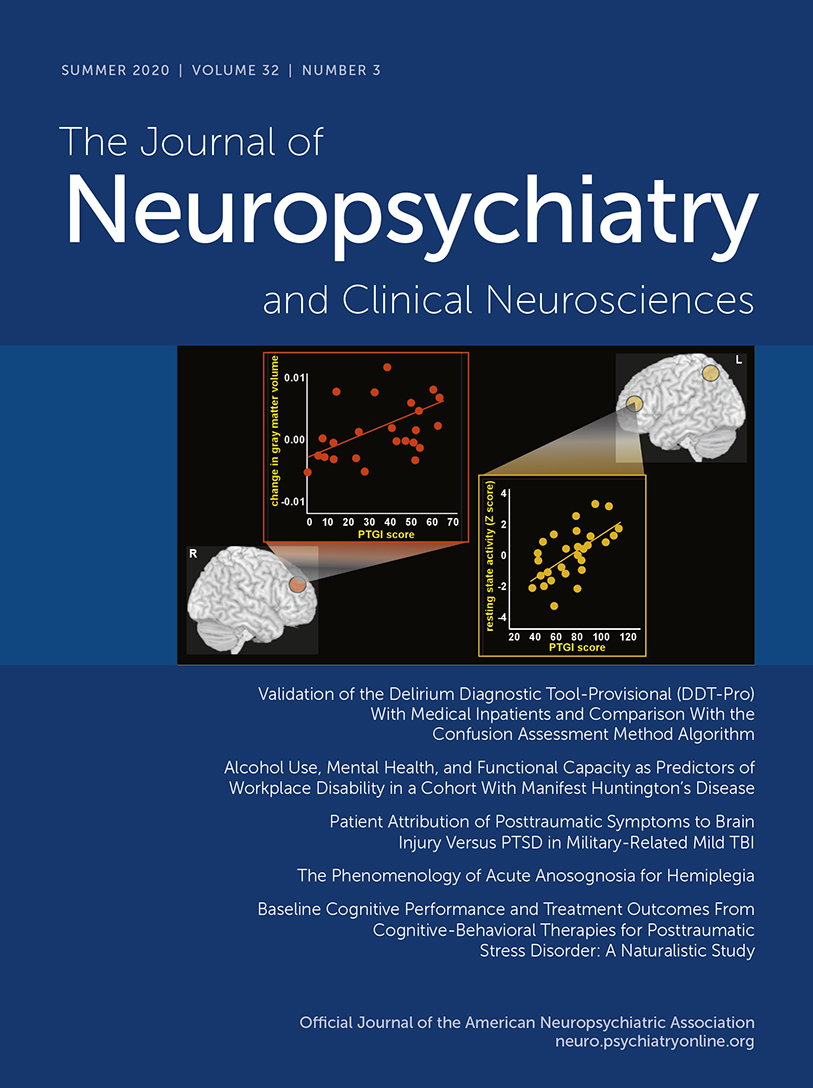Validation of the Delirium Diagnostic Tool-Provisional (DDT-Pro) With Medical Inpatients and Comparison With the Confusion Assessment Method Algorithm
Abstract
Objective:
Delirium remains underdetected as a result of its broad constellation of symptoms and the inadequate neuropsychiatric expertise of most medical-surgical clinicians. Brief, accurate tools are needed to enhance detection.
Methods:
The authors extended validation of the Delirium Diagnostic Tool-Provisional (DDT-Pro), originally validated in a study of inpatients with traumatic brain injury for diagnosis of delirium by nonexpert clinicians, for 200 general medical inpatients in Colombia. The three structured, quantitatively rated items in DDT-Pro represent the three core delirium domains.
Results:
High interrater reliability between physician and nurse (0.873) administrators, internal consistency (>0.81), and content validity were found. Compared with independent reference standard diagnosis with DSM-5 or the Delirium Rating Scale–Revised-98, the area under the receiver operating characteristic (ROC) curve (global diagnostic accuracy) range was 93.8%−96.3%. ROC analysis revealed the same cutoff score (≤6) as that for the original study, with somewhat lower sensitivities of 88.0%−90.0% and specificities of 85.3%−81.2% (independent expert physician or nurse ratings). Even when rated by a trained expert physician, the original version of the Confusion Assessment Method algorithm (CAM-A) performed moderately, with lower sensitivities (61.8%−70.0%) than the DDT-Pro (88.0%−100%) and somewhat higher specificities (84.8%−95.3% versus 67.4%−86.7%), with values depending on dementia status, reference standard, and rater type. Accuracies for the DDT-Pro and CAM-A were comparable (DDT-Pro: 83.0%−87.5% versus CAM-A: 87.5%−88.5%), although lower in the dementia subgroup, especially for CAM-A. However, these tools were significantly discordant, especially in negative cases, which suggests that they do not detect diagnosis of patients in the same way.
Conclusions:
The DDT-Pro had high validity and reliability in provisional delirium diagnosis by physicians and nonexpert clinicians, although further validation is warranted before widespread use can be recommended.



